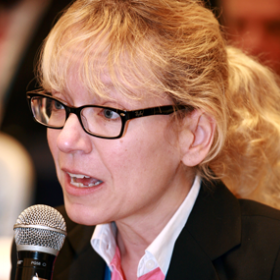
Developments in U.S. Missile Defense Policy and Their Regional Impact
On July 17, 2018, Dr. Lora Saalman joined Dr. Zhao Tong, Dr. Li Bin, Dr. Wu Riqiang and Dr. Liu Chong for a Chinese-language discussion on new developments in U.S. missile defense policy and how they are shaping the Asia-Pacific security landscape.
U.S. missile policies and defense capabilities have long influenced East and Northeast Asia’s security outlook. While the U.S. argues that its deployment of the THAAD missile defense system in South Korea is necessary to counter the nuclear threat from North Korea, Chinese experts worry that U.S. missile defense assets in the region could undermine China’s strategic nuclear deterrent capability. The dispute over the THAAD deployment is just one recent example of how divergent perceptions of missile defense systems can damage regional bilateral and multilateral relations. In anticipation of the release of the Trump administration’s Missile Defense Review, this roundtable discussion examined recent changes in U.S. missile defense policy and their potential impact on major power security relationships in the region.
Click here to learn more.
Photo: "FTO-02_E2A_HALO-I_eMRBM_Intercepted_by_T" (CC BY 2.0) by U.S. Missile Defense Agency

